Last time, I discussed what I perceive as a problem in the way that most open world games (specifically, sandbox games) design their maps and use the space that the maps offer - or fail to use that space, to be more specific. So many open world maps end up feeling less like actually playing the game, and more like a convoluted mission-select and collectible checklist screens. This problem is especially bad in the Ubisoft model of design, and is also a problem (to a lesser extent) in Bethesda's open worlds. Due to the popularity of these developers' franchises, many other developers have been cloning these styles of games to one extent or the other, to the point at which Ubisoft's open world model seems to be the go-to template for any developer trying to make an open world game. These games aren't necessarily bad. They just aren't very good at making the space of their maps feel meaningful in its own right.
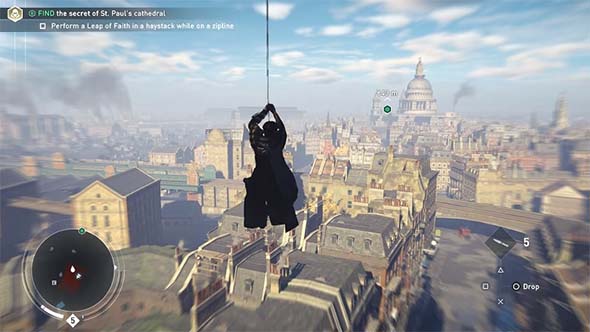
Many open world games have large, expansive maps that mostly feel empty and pointless,
as the player rushes through them simply to get to the next map marker or checklist item.
But now that I've established what I see as a problem, I want to focus on positive feedback. In this discussion, I'm going to look at a handful of games that should serve as inspirations for would-be open world developers. Ironically, some of these games aren't even open world games, but they still pose valuable lessons for how games that are open world could better use their game spaces. That isn't to say that the games discussed here are perfect. In fact, many of them have their own major flaws. But each of them has some element of design that utilizes the actual game map as a component of active play, rather than just a space in which game sequences exist. First, let's take a look at a game that was re-made recently, and use it as a "before and after" case study of map design... [More]
75d0658b-0278-43f3-a9e5-d3df3d01939d|4|4.3
Tags:open world, map, traversal, travel, cartography, geography, narrative, ludonarrative, ludonarrative dissonance, quest, vehicle, driving, racing, exploration, wasteland, survival, resources, Ubisoft, Bethesda, Resident Evil, Metal Gear Solid V: the Phantom Pain, Assassin's Creed, The Elder Scrolls, Skyrim, The Witcher 3, Grand Theft Auto, Grand Theft Auto V, Grand Theft Auto: San Andreas, Shadow of Mordor, Fallout, Fallout: New Vegas, Wasteland 2, Mad Max, Miasmata, Assassin's Creed IV: Black Flag, Burnout: Paradise, Shadow of the Colossus, Dark Souls
I wrote a lengthy blog late last year about the stagnant, "limbo"-like feel of most open world games' narratives. I had written that blog mostly before I played Metal Gear Solid V, and so I wasn't able to incorporate my thoughts regarding that game into the blog. But I did come to a new realization about open world gaming while I was playing MGSV. In my review of that game, I noted that:
"Even the open world itself feels constrained, as sheer cliffs prevent you from travelling too far off of the roads and serve to functionally railroad the player towards the small set-piece outposts and villages."
- from my Metal Gear Solid V: the Phantom Pain review
I realized while playing MGSV that the game had built this large, open world (well, two large, open worlds really, but I hadn't gotten that far yet), but it didn't really care to let the player actually traverse that space or use it in any meaningful way other than scavenger hunting for collectibles. At least those collectibles felt relevant to gameplay though! Roughly half the map is dead space that the player can't even access. There was also this strange focus on using the helicopter to drop in and drop out of missions, rather than actually living in the game world, as the character had to do in Snake Eater. The map started to feel less and less like a place, and more like a convoluted mission-select screen. At first, this seemed like a strange, isolated example of an open world game that really doesn't want the player actually exploring its world. But as I thought about it, I realized that this isn't really a new phenomenon; it's actually just a very extreme example of what has become a sort of defacto state in most open world games.
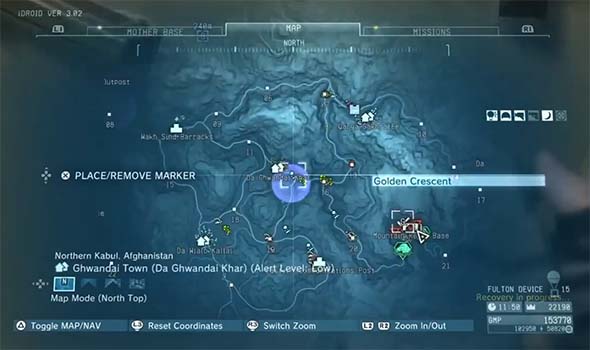
The Afghanistan map of Metal Gear Solid V feels heavily constrained by sheer cliffs.
Think about it this way: in a linear game with rooms and corridors, every hallway and room should serve some purpose or function. In most games, this function will be some kind of skill or system mastery test. An action game like Devil May Cry will throw enemies at you to fight; a puzzle game like Portal will have a puzzle (or a piece of a puzzle) in the room to solve; a stealth game like Metal Gear Solid 3 will have a sneaking challenge or obstacle to pass; and so on. In the best games, each of these challenges will also provide a unique or novel test of skill or system mastery: unique combinations of enemies, unique puzzles, or novel arrangements of enemies and obstacles. Other games can use those rooms for thematic or narrative purposes. A survival horror game like Resident Evil or Silent Hill will usually put enemies, puzzle items, or supplies in a room, but some rooms might instead contain a scripted scare. In some cases, a room might even be left completely empty in order to build some kind of tension or anticipation, or to delay the release of already-built tension or anticipation.
So what is the gameplay purpose of an open world map? ... [More]
d6e62cdb-b171-437a-b1a7-107859c9c818|4|4.5
Tags:open world, sandbox, game design, map, paradox, traversal, travel, cartography, geography, narrative, ludonarrative, ludonarrative dissonance, quest, exploration, driving, racing, vehicle, Ubisoft, Bethesda, Beenox, Metal Gear Solid V: the Phantom Pain, Assassin's Creed, the Amazing Spider-Man, Spider-Man, web-swinging, The Elder Scrolls, Skyrim, The Witcher 3, Fallout, Mad Max, Far Cry
Silent Hills just won't seem to die. Shortly after the game was canceled by Konami, petitions started popping up demanding that it be re-instated. Then came the debacle of the Metal Gear Solid V release, which seemed blatantly incomplete and/or half-assed. Then Kojima officially left Konami, Guillermo del Toro tweeted that the cancelation of Silent Hills "breaks his greasy heart", and it all seemed done and buried.
Or was it?
Andrew House (Group CEO of Sony Interactive) announces a partnership with Hideo Kojima.
Within a week of the official announcement that Kojima had left Konami, he was reported to have already set up his own independent Kojima Productions studio, and that he had already partnered with Sony to develop an un-named PS4 exclusive. Geez, that was quick. Kojima has always had a good relationship with Sony. The Metal Gear Solid games were originally PlayStation exclusives, and were definite showcases for those Sony platforms. I mean, when you think of the original PlayStation, what are the first few games that come to mind? Probably Final Fantasy VII. Tomb Raider? Maybe Resident Evil? And definitely Metal Gear Solid. Even when Kojima was initially rumored to be leaving Konami, I had speculated that Sony might make a move to hire him. Contracting him to act as a second-party developer of exclusive content is just as good. I had also speculated at the time that there were three possibilities for Silent Hills to see the light of day:
- Konami could hire Kojima's independent studio to continue development of Silent Hills. This seemed unlikely considering the rocky conclusion to Kojima's employment.
- Kojima could buy the IP rights to Silent Hill (and maybe Metal Gear). This also seemed unlikely considering that both franchises are cash-cows for Konami.
- Lastly, there was the possibility that Kojima Productions could continue the development of what would have been Silent Hills, but without the "Silent Hill" title. Same game; different name.
The partnership with Sony opens up a fourth possibility: Sony could buy or lease the licensing rights to Silent Hill and then contract out development to Kojima Productions. This is the only way that the game could possibly see the light of day and still maintain the "Silent Hill" name. Konami has already expressed its disinterest in continued first-party console game development. It's just too expensive, and the company wants to focus more on its gambling business and mobile games. If Konami wants to continue to see revenue from those IPs, then they are stuck either making smaller in-house games (such as mobile games, pachinko machines, or browser-based games); or they would have to license out the IP to third-party developers. Sony certainly has the buying-power that Kojima, by himself, doesn't have, and could certainly afford to buy those rights, if they so desire.
A trailer for Konami's next Silent Hill game. Not exactly what fans were hoping for...
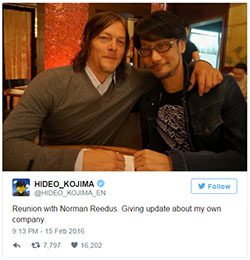
However, Silent Hill fans probably shouldn't get their hopes up for a triumphant return of their tarnished, yet beloved, franchise. In the video announcing the partnership with Sony, Kojima says that he is "thrilled to embark on creating a new franchise with PlayStation". So this project does not appear to be Silent Hills. At least, not in title...
Kojima is rumored to be collaborating once again with Guillermo Del Toro, which opens up the possibility that the two are going to work on realizing the plans that they had for Silent Hills. During a keynote address at DICE, Kojima and Del Toro stated that they would like to continue to work together. Del Toro even went as far as saying that he would "do whatever the fuck Kojima asks him to". He even made an off-hand comment about famed Japanese horror illustrator Junji Ito. I don't know much bout Junji Ito, but his work is apparently a pretty big deal, and he's also been seen with Kojima. Kojima and Norman Reedus have even been seen together, and it's been rumored that Reedus will be working with Kojima again. All the pieces seem to be fitting into place... [More]
950b88ce-adc4-4f17-85ce-fd55c7172eb0|2|5.0
Tags:Hideo Kojima, Guillermo del Toro, Andrew House, Norman Reedus, Junji Ito, Kojima Productions, Sony, PlayStation 4, PS4, virtual reality, PlayStation VR, exclusive, Konami, Fox Engine, Silent Hill, Silent Hills, P.T., Metal Gear Solid, Metal Gear Solid V: the Phantom Pain, Fungo, RagnarRox, conspiracy, rumor
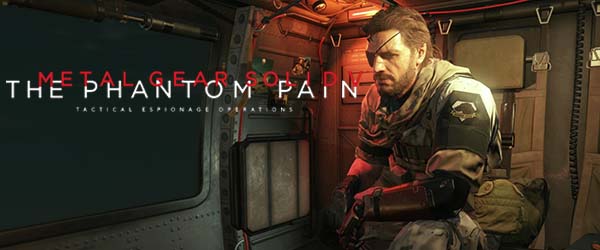
It took months, but I finally finished and reviewed Metal Gear Solid V. It was a tough game to review, mostly because my dreams for an epic conclusion to the Metal Gear franchise seem to have been dashed by corporate stupidity forcing the game to be released before it was finished. Maybe Kojima (and Konami) have some elaborate trick up their sleeve, and there's going to be some crazy patch that replaces the recycled missions in Chapter 2 with real missions, and which adds the missing third chapter and the "Kingdom of the Flies" mission. Unless that happens, I'm going to operate under the assumption that the recycled missions of chapter 2 were put in as placeholders for missions that were planned but never completed. And I have some ideas of what a couple of those missions might have been about.
There's half of Foxhound from Metal Gear Solid 1, right there!
After retrieving the microfilm in mission 38, you get a couple of intel tapes that might inform exactly what chapter two was supposed to be about.
Informant's Report: Part 2 talks about the "Third Boy", who is a young Psycho Mantis. The first part of the tape reveals details on how Psycho Mantis' powers work. The second part is a bit more interesting, as it poses the conjecture that Eli was projecting his will onto the Third Boy, and controlling Sehalanthropous. This establishes how Eli (who would later be revealed to be Liquid Snake) begins his partnership with Psycho Mantis, the first recruit in his Foxhound team that would eventually take over Shadow Moses in the first Metal Gear Solid game.
Was mission 40 supposed to be about Sniper Wolf?
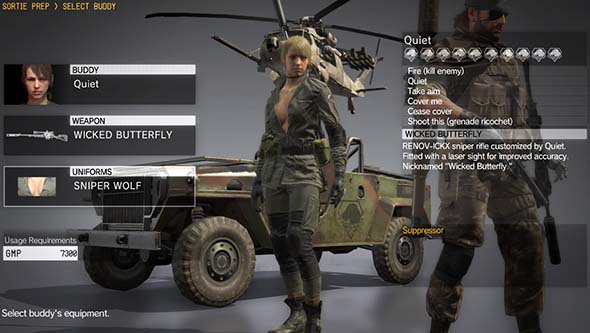
Obtaining Sniper Wolf's handerchief from the retread of "Cloaked In Silence" unlocks the Sniper Wolf costume.
With that in mind, let's take another look at mission 40. It's a repeat of mission 11: "Cloaked In Silence". It's a repeat of the sniper battle with Quiet, complete with the same mission briefing and even repeating the cutscene of Quiet shooting down the pursuing plane on the way back to Mother Base. All the repeat missions in chapter 2 are reproduced verbatim from the original mission, right down to the bookending cutscenes (even though they make absolutely no narrative sense). But there's two interesting things about mission 40 that make it stand out. The first is that Quiet isn't wearing her regular bikini outfit. She's wearing a jumper - Sniper Wolf's jumper from Metal Gear Solid 1. She even has blonde hair. Secondly, completing the mission awards the player with a Handerchief item that allows Quiet to be equipped with the Sniper Wolf outfit.
Is this a simple fan-service Easter Egg? Or was Mission 40 supposed to be a battle with a young Sniper Wolf that would establish how Eli [Liquid] and Sniper Wolf first met?
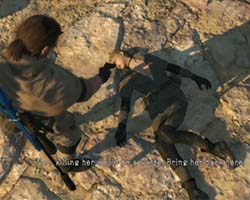
Quiet even wears this uniform during the battle.
Sniper Wolf was born in Iraq, and she grew up amongst military conflict, she moved around the Middle East and Africa frequently to avoid the authorities, and she was eventually rescued from that life by Big Boss. So her backstory is actually a near perfect match for an appearance in Phantom Pain! Maybe Iraq was supposed to be a third area of operations? Mission 40 could have been intended to be a mission in which the player finds a young sniper wolf, engages her in battle to test her ability, and then captures and recruits her. Kojima may not have had time to finish this mission, and so Quiet's alternate outfit model was used instead, and Quiet's duel mission became a place-holder.
I would expect that if a young Sniper Wolf had been planned, then Kojima would have already cast a voice and mo-cap artist. But as far as I know, nobody has found assets for any character model or dialogue from any one who could qualify as a young Sniper Wolf. IMDB does list some voice actresses for various soldier roles, but no young girls other than Paz's voice (from Tara Strong). But if the game is truly unfinished, and whole chapters hadn't even been developed yet, then it's possible that such casting simply hadn't happened yet. If early rumors of the mission list are true, then the game wasn't nearly as far along as we think. That mission list, by the way, has a mission late in the game called "Beauty of the Battlefield", which could be a prime candidate for the mission that would have introduced a young Sniper Wolf, and the fact that it takes place during a chapter called "The Cost of Revenge" could also be appropriate to Sniper Wolf's story. Though, this mission could also just have easily been a mission about Quiet.
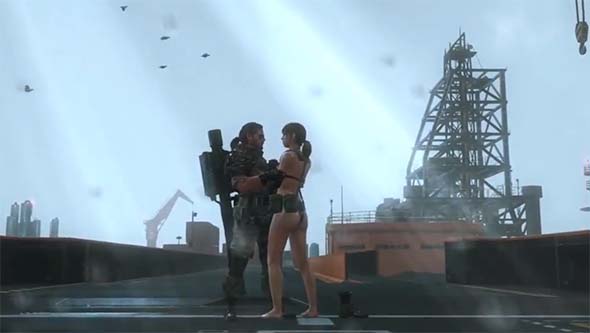
It is implied several times by behavior and dialogue that Quiet has romantic feelings for Snake.
Alternatively, the intent of establishing a link between Quiet and Sniper Wolf might be to imply that Quiet is Wolf's mother. There are hints of a possible romance between Quiet and Venom Snake. Ocelot suggests that Quiet might not have killed Snake because she likes him as early as right after you bring her back to base. There's the infamous "playing in the rain scene", and her final casette tape after "A Quiet Exit" even says that she has "feelings" for Snake. And then, of course, there's her suggestive poses in the brig and helicopter. It's possible that there could have been a point during design in which they were planned to have a romantic relationship and possibly even a child together (assuming Quiet is even capable of conceiving and bearing children in her condition). Alternatively, Quiet could have mothered Sniper Wolf prior to the operation in Cyprus. Her injuries during that operation, and abduction and experimentation by Cipher and Skull Face could have separated her from her young child and left Sniper Wolf an orphan... [More]
253e7ff0-092e-4d52-b340-0ef9d897fafa|0|.0
Tags:Metal Gear Solid, Metal Gear Solid V: the Phantom Pain, Foxhound, Eli, Liquid Snake, Revolver Ocelot, Third Boy, Psycho Mantis, Quiet, Sniper Wolf, handerchief, sniper, Vulcan Raven, raven, Decoy Octopus, Gray Fox, Shadow Moses

Are you one of the poor suckers who paid $30-40 for Ground Zeroes and were ready for The Phantom Pain to make up for your disappointment with what was little more than a glorified (and over-priced) demo? I wasn't, because I got Ground Zeroes for free from my PSPlus subscription around the same time that Phantom Pain was released. I was obviously disappointed with the demo's short length, and I didn't bother doing any of the side missions. But since I didn't pay for it, I wasn't as enraged as some other players might have been.
I actually really liked what little gameplay Ground Zeroes had to offer. The Guantanamo Bay arena was well-designed and offered some good infiltration challenge that tested my Metal Gear capabilities. The A.I. was surprisingly competent and adaptive - not so much that I couldn't exploit them occasionally, but still good. The graphics, lighting, and weather effects all looked outstanding. It was a fun experience. Not "forty dollars fun", but pretty fun. At least part of the battle at Mother Base should have been playable, and I didn't like that large elements of the story were hidden away in collectible audio tapes, but whatever.
I got Ground Zeroes for free on PSPlus, instead of paying $30-40 MSRP for a glorified demo.
Ground Zeroes gave me flashbacks to the phenomenal classic Sons of Liberty demo that came packaged with Zone of the Enders on the PS2. At least that only cost me a $3 rental, and I got to play Zone of the Enders too. After Ground Zeroes, I was looking forward to getting my hands on the much bigger Phantom Pain, and was optimistic that it would provide an equally good experience that would be worth the purchase price. Phantom Pain is a very long, very complicated, and very uneven game. So buckle up, friend. This is going to be a long review.
Table of Contents
After having written a lengthy blog post about how open world, sandbox game design almost necessarily puts the game's narrative in a state of limbo, I was amazed to start up Metal Gear Solid V and see the very first mission took my criticisms to heart. Of course, the game had already been released by the time I had written that opinion piece, so I can't take credit for having influenced its development, but it was still refreshing and gratifying. Anyway, in the very first mission, Ocelot tells you that Miller has been captured by Soviets in Afghanistan, has been tortured for intel, and has three days - tops - to live. You must rescue him before that time.
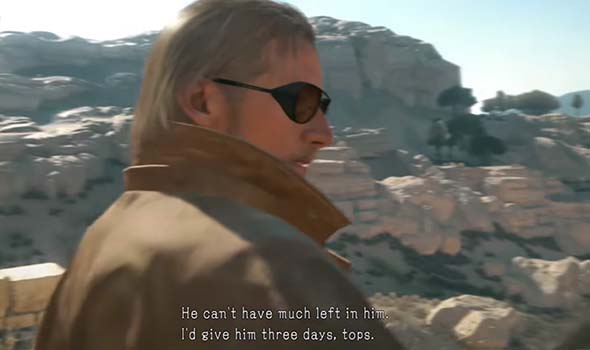
Ocelot gives the player three days to rescue Miller...
At first, I didn't put much stock in Ocelot's claim. After all, sandbox games are notorious for saying that something needs to be done ASAP, but they never have the balls to actually walk the walk and enforce that objective. Until now. When checking my map, I noticed something in the corner that I hadn't noticed in other sandbox games before: an "elapsed time" counter. The game was plainly tracking how long it was taking me to complete the primary mission objective. I treated this timer with a certain degree of skepticism. But sure enough, failure to rescue Miller within the allotted time actually results in a "Game Over"!
This is exactly how I feel that priority objectives in open world games should be handled: make it apparent to the player (through dialogue and/or explicit notification) that an objective is being timed or that it is otherwise a priority, and make sure that there are reasonable, perceivable consequences for failure to achieve that objective within the expected conditions. Then design some early-game quests or objectives such that the player is put in a position in which they can (or must) fail; thus, teaching the player that when the game says "do x or else", the game actually means it. I put down the controller and gave Hideo Kojima a standing ovation. But would this opening mission set a precedent that priority missions must actually be prioritized, and would that precedent stand throughout the rest of the game? Or was this just a one-off occurrence that would not be representative of the rest of the game? Regardless, a tone was plainly set for the rest of the game, and the stakes had been raised.
... Failure to rescue Miller within the allotted time results in his death and a Game Over.
Would this refreshing precedent carry over into the rest of the game? Well, sort of... [More]
11c3f412-b61e-422f-96c9-742ddb50d6fb|5|4.2
Tags:Metal Gear, Metal Gear Solid, Metal Gear Solid V: the Phantom Pain, Konami, Hideo Kojima, Fox Engine, tactical espionage operations, tactical espionage action, espionage, stealth, snake, Big Boss, Revolver Ocelot, Quiet, dog, Diamond Dogs, Afghanistan, Africa, open world, desert, sandbox, Fulton Recovery System, balloon, horse, Mother Base, helicopter, Soviet Union, Skull Face, Cipher, Zero, Sahelanthropus, Keifer Sutherland, David Hayter, ludonarrative, ludonarrative harmony, FOB, online, PvP, Metal Gear Online
|

| 12 | | | | | | | 60 | | 11 | | | | | | | 55 | | 10 | | | | | | | 50 | | 09 | | | | | | | 45 | | 08 | | | | | | | 40 | | 07 | | | | | | | 35 | | 06 | | | | | | | 30 | | 05 | | | | | | | 25 | | 04 | | | | | | | 20 | | 03 | | | | | | | 15 | | 02 | | | | | | | 10 | | 01 | | | | | | | 05 |
|